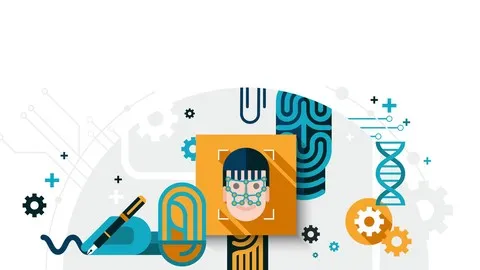
Computer Vision With Arduino 2 Hour Course OpenCV Python 
This two-hour course introduces students to the basics of computer vision with Arduino. It covers topics such as Arduino basics, Arduino sensors, PWM, Python, Pycharm IDE, Arduino IDE, CVZone Library, and LED wiring. Students will learn how to use these tools to create projects with computer vision capabilities. By the end of the course, students will have a better understanding of how to use Arduino and computer vision to create projects. ▼
ADVERTISEMENT
Course Feature
![]() Cost:
Cost:
Free
![]() Provider:
Provider:
Youtube
![]() Certificate:
Certificate:
Paid Certification
![]() Language:
Language:
English
![]() Start Date:
Start Date:
On-Demand
Course Overview
❗The content presented here is sourced directly from Youtube platform. For comprehensive course details, including enrollment information, simply click on the 'Go to class' link on our website.
Updated in [February 21st, 2023]
Trailer
Introduction - Arduino Basics
Introduction - Arduino Sensor
Introduction - PWM
Installation - Python
Installation - Pycharm IDE
Installation - Arduino IDE
Insatllation - CVZone Library
Led Wiring
Led Arduino Code
Led Python Code
Led Graphics
Potentiometer Wiring
Potentiometer Arduino Code
Potentiometer Python Code
Potentiometer Graphics
Face Detection LED - Detecting Faces
Face Detection LED - Arduino Code
Face Detection LED - Python
Face Detection RGB - Wiring
Face Detection RGB - Basic
Face Detection RGB - RGB Serial
Face Detection RGB - Python Code
(Please note that we obtained the following content based on information that users may want to know, such as skills, applicable scenarios, future development, etc., combined with AI tools, and have been manually reviewed)
Computer Vision With Arduino 2 Hour Course OpenCV Python is a comprehensive course that teaches learners how to use Arduino and OpenCV to create computer vision projects. Learners will gain an understanding of Arduino basics, Arduino sensors, PWM, Python, Pycharm IDE, Arduino IDE, CVZone Library, LED wiring, LED Arduino code, LED Python code, LED graphics, potentiometer wiring, potentiometer Arduino code, potentiometer Python code, potentiometer graphics, face detection LED, face detection RGB wiring, face detection RGB basic, face detection RGB RGB serial, and face detection RGB Python code.
This course is ideal for learners who are interested in learning how to use Arduino and OpenCV to create computer vision projects. Learners will gain a comprehensive understanding of the fundamentals of Arduino and OpenCV, as well as the ability to create their own computer vision projects. Additionally, learners will gain an understanding of the different components of Arduino and OpenCV, such as wiring, coding, and graphics.
This course is also beneficial for learners who are interested in pursuing a career in computer vision. By taking this course, learners will gain the necessary skills and knowledge to pursue a career in computer vision. Additionally, learners will gain an understanding of the different components of computer vision, such as wiring, coding, and graphics.
Overall, Computer Vision With Arduino 2 Hour Course OpenCV Python is a comprehensive course that teaches learners how to use Arduino and OpenCV to create computer vision projects. Learners will gain an understanding of Arduino basics, Arduino sensors, PWM, Python, Pycharm IDE, Arduino IDE, CVZone Library, LED wiring, LED Arduino code, LED Python code, LED graphics, potentiometer wiring, potentiometer Arduino code, potentiometer Python code, potentiometer graphics, face detection LED, face detection RGB wiring, face detection RGB basic, face detection RGB RGB serial, and face detection RGB Python code. This course is ideal for learners who are interested in learning how to use Arduino and OpenCV to create computer vision projects, as well as those who are interested in pursuing a career in computer vision.
[Applications]
The application of this course can be seen in various projects such as controlling LEDs with Arduino, controlling RGB LEDs with Arduino, and face detection with Arduino. After completing this course, the user can use the knowledge gained to create projects such as controlling LEDs with Arduino, controlling RGB LEDs with Arduino, and face detection with Arduino. Additionally, the user can use the Python programming language to create more complex projects such as controlling multiple LEDs with Arduino, controlling multiple RGB LEDs with Arduino, and face detection with multiple RGB LEDs. Furthermore, the user can use the OpenCV library to create more advanced projects such as facial recognition and object tracking.
[Career Paths]
1. Computer Vision Engineer: Computer vision engineers are responsible for developing and implementing computer vision algorithms and systems. They use a variety of techniques, such as machine learning, deep learning, and image processing, to create systems that can detect, recognize, and track objects in images and videos. The development of autonomous vehicles, facial recognition systems, and medical imaging systems are all examples of the work of computer vision engineers. This field is rapidly growing, with new applications being developed every day.
2. Robotics Engineer: Robotics engineers design, build, and program robots for a variety of applications. They use computer vision algorithms to enable robots to sense and interact with their environment. Robotics engineers are also responsible for developing algorithms for robot navigation, motion planning, and object manipulation. This field is growing rapidly, with new applications being developed in areas such as healthcare, manufacturing, and agriculture.
3. Artificial Intelligence Engineer: Artificial intelligence engineers develop algorithms and systems that enable machines to learn and make decisions. They use computer vision algorithms to enable machines to recognize and classify objects in images and videos. This field is rapidly growing, with new applications being developed in areas such as healthcare, finance, and autonomous vehicles.
4. Data Scientist: Data scientists use computer vision algorithms to analyze large datasets and extract meaningful insights. They use a variety of techniques, such as machine learning, deep learning, and image processing, to develop models that can detect patterns in data. This field is rapidly growing, with new applications being developed in areas such as healthcare, finance, and marketing.
[Education Paths]
1. Bachelor of Science in Computer Science: This degree program provides students with a comprehensive understanding of computer science principles and their application to the development of software and hardware systems. Students learn about programming languages, operating systems, computer networks, and computer architecture. They also gain experience in problem solving, data structures, and algorithms. This degree is ideal for those interested in pursuing a career in software engineering, computer programming, or computer systems engineering.
2. Master of Science in Artificial Intelligence: This degree program focuses on the development of intelligent systems and their application to various fields. Students learn about machine learning, natural language processing, computer vision, robotics, and other related topics. They also gain experience in developing algorithms and software for intelligent systems. This degree is ideal for those interested in pursuing a career in artificial intelligence research or development.
3. Doctor of Philosophy in Computer Science: This degree program provides students with an in-depth understanding of computer science principles and their application to the development of software and hardware systems. Students learn about programming languages, operating systems, computer networks, and computer architecture. They also gain experience in problem solving, data structures, and algorithms. This degree is ideal for those interested in pursuing a career in research or academia.
4. Master of Science in Computer Vision: This degree program focuses on the development of computer vision systems and their application to various fields. Students learn about image processing, object recognition, 3D reconstruction, and other related topics. They also gain experience in developing algorithms and software for computer vision systems. This degree is ideal for those interested in pursuing a career in computer vision research or development.
Course Provider

Provider Youtube's Stats at AZClass
Discussion and Reviews
0.0 (Based on 0 reviews)
Explore Similar Online Courses

Real estate exam questions review and flash cards

Toon Boom Harmony Tutorial for Beginners: How to Make a Cartoon (PART 2)

Python for Informatics: Exploring Information

Social Network Analysis

Introduction to Systematic Review and Meta-Analysis

The Analytics Edge

DCO042 - Python For Informatics

Causal Diagrams: Draw Your Assumptions Before Your Conclusions

Whole genome sequencing of bacterial genomes - tools and applications

Introduction to Computer Vision

Learn Computer Vision with OpenCV Library using Python

Build an Object Detection Model with Python
 Related Categories
Related Categories
 Popular Providers
Popular Providers
Quiz
 Submitted Sucessfully
Submitted Sucessfully
1. What is the first step in the course?
2. What is the last step in the course?
3. What is the second step in the course?


Start your review of Computer Vision With Arduino 2 Hour Course OpenCV Python